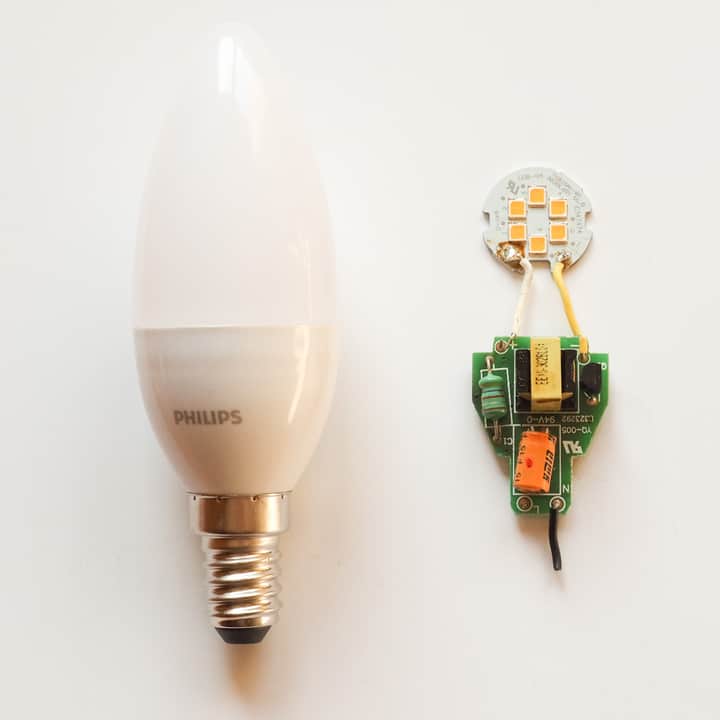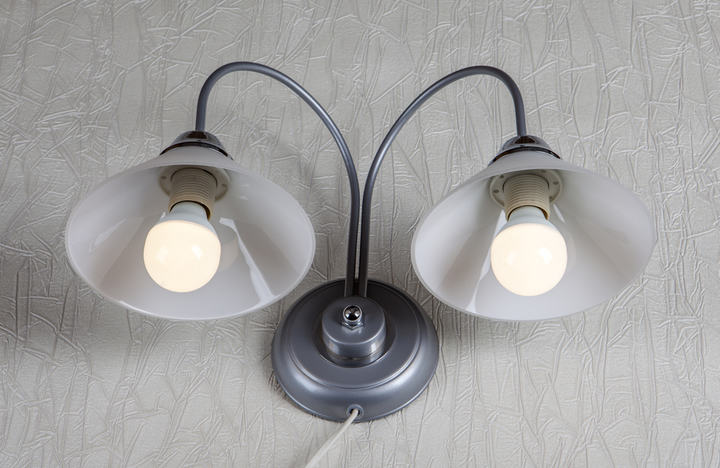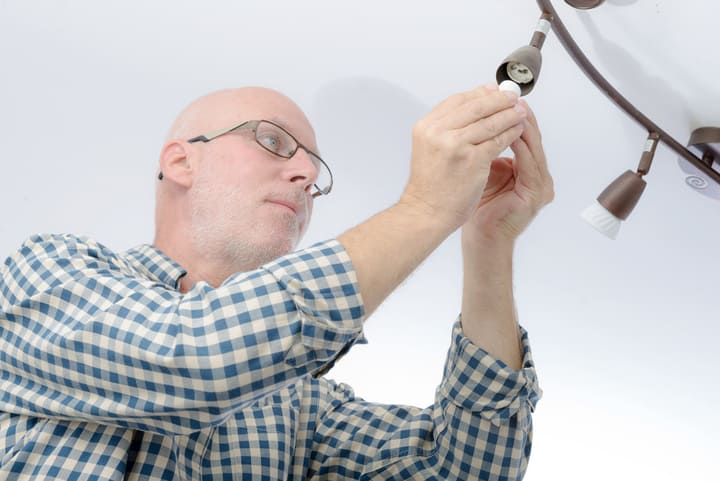I’m sure you’ve heard of the phrase “nothing lasts forever,” but how true is this for LEDs?
They don’t burn out in the same way that old light bulbs do, but do LED lights dim over time?
LED bulbs will get progressively dimmer throughout their life until they stop producing light altogether. This is normal, though it can be accelerated by some other factors, like overheating. Most LEDs have an L70 rating, which denotes how many hours the bulb will last before it hits 70% of its initial light offering.
In this guide, I’m going to explain:
- The reason why your LED lights get dimmer over time
- How to slow down the dimming of your LED light bulbs
- How to know if your LED light has reached the end of its life
Why Do LED Lights Lose Brightness Over Time?

LED bulbs emit light when the current flows through the semiconductor – but over time, threading dislocation within the semiconductor reduces the opportunities for positive and negative electrons to create light. Over time, more dislocations occur within the semiconductor threading, so less light can be emitted.
To try and explain it simply – for light to be created, the positive and negative electrons in the semiconductor have to swap places before recombining – and this then emits light.
But over time, the number of channels for this to occur in reduces as they wear down, so there are fewer opportunities for the electrons to come back together – so there’s not as much light given out by your LED bulb.
Right from the manufacturing stage, there are parts of the semiconductor that cannot emit light. But this gets worse over time.
Lumen Degradation
Lumen degradation is the measurement of the loss of brightness in lights. In the U.S., most LEDs are given an L70 rating; this sets out how long it will take for lumen output to fall below 70% – considered to be a noticeable change in brightness by human vision.
Once an LED has faded past 70%, it will still give off light, but it may no longer be fit for purpose.
It’s also worth noting that lumen degradation is not linear, and though it may begin slowly, after 70%, the light will fade faster and faster.
Do LED Lights Get Dimmer When They Are Hot?

LED lights do get dimmer when they are hot, because the thread dislocation within the semiconductor is accelerated by heat – it causes those channels to wear out faster.
Most LEDs contain a heat sink that dissipates heat away from the diode to prevent overheating.
But beyond this, if you want to keep your LEDs in tip-top shape, it’s recommended that you don’t let the ambient temperature exceed 140°F (60°C).
Excessive heat can also damage the phosphor coating of the bulb, which helps to create the white light effect.
Heat and lumen output aren’t just linked in the long term, though – the light output of your LED bulb can be affected in the short term by excessive temperatures, as the bulbs fail to function correctly.
Lowering the temperature should help with this but you’ll still have lowered the life expectancy of your LED lighting by letting it get to this stage.
How To Reduce LED Degradation Over Time?

To protect the brightness of your LED lamp over time, you should:
- Make sure the bulb isn’t overheating, and there is good airflow around the space
- Only use a suitable LED lamp for the fixture
- Avoid using non-dimmable LEDs in a dimmer circuit
- Make sure there are no excess vibrations affecting the bulb
As I’ve mentioned, heat can accelerate the rate that LEDs lose brightness over time. Don’t install them next to a radiator and make sure the room doesn’t get excessively hot.
You also need to avoid using a light with too high a wattage for the fixture. Make sure you only use dimmable LEDs with a dimmer circuit too – non-dimmable bulbs won’t work and will degrade faster.
While LEDs aren’t as badly affected by vibrations, unlike incandescent bulbs, it’s still best to minimize them. Make sure the bulb fits the fixture securely and isn’t too close to a ceiling fan or door.
Has My LED Light Reached The End Of Lifespan?

The easiest way to check whether your LED light bulb has reached the end of its lifespan is to try it in another fixture, on a different circuit (so in a different room). If it remains dim, then it has suffered from LED degradation and is likely finished.
Unlike traditional bulbs, there’s not usually a pop or other indicator that the LED has died. The light quality will slowly decrease over time, but otherwise, it will keep working. They don’t usually have flickering issues, unlike fluorescent lamps too.
So, if the LED luminosity has dipped, consider whether the bulb has lasted as long as you expected. If it did, you know it’s probably just time to replace the bulb.
If not, it could be a problem with the power supply or another part of the circuit that’s fried the LED chip and caused the loss of brightness. It may be worth looking at the fixture wiring.
Of course, if you’ve bought a cheap bulb with poor-quality electronic components, it likely won’t last as long as advertised anyway.
Final Words
Just like traditional bulbs, LEDs will always suffer from lumen degradation. Over time, their ability to produce light will fade. Until superconductors are really cracked, electrical devices will deplete over time.
But you can preserve the light output of your LED bulbs by taking proper care of them – making sure they don’t overheat, that they’re installed in the right fixture, and that you minimize the impact of vibrations on the internal components.
If you’re finding that your lights are dimming too quickly, read my guide on reasons why LED bulbs keep burning out – this may have the solution you need.
Looking for an LED bulb but not sure what type you need?
Check out my free bulb picker and select the right bulb within few clicks.


Comments are closed.